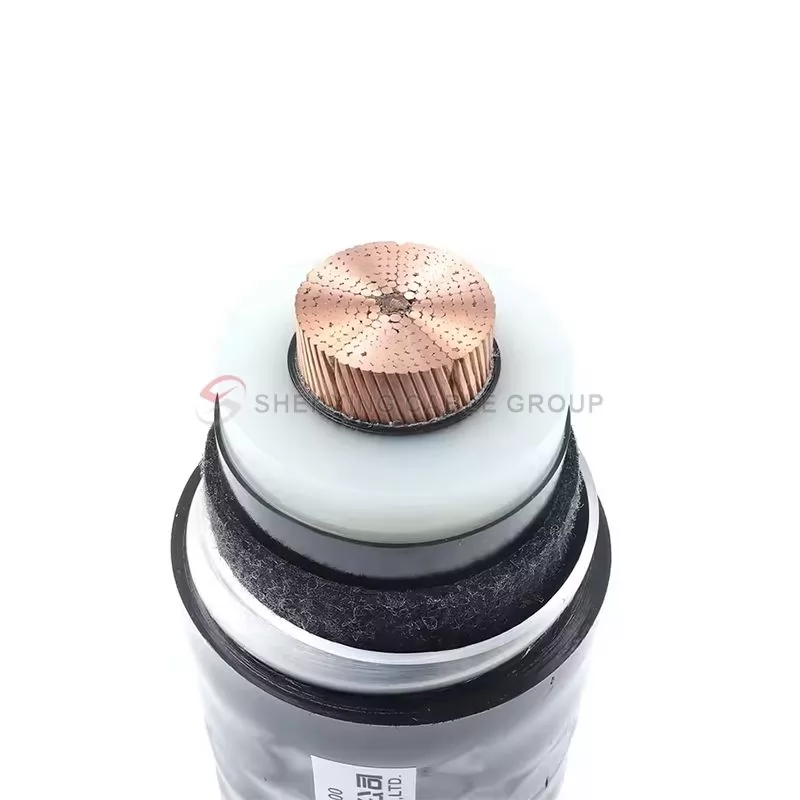+86 151 2718 0862
+86 151 2718 0862

A large-scale wire and cable enterprise group integrating manufacturing, sales, design and research and development.
INQUIRY NOW
A large cale wire and cable enterprise group integrating manufacturing,sales, design and research and development.
INQUIRY NOWNews
Welcome to the news section of Shenxing Cable Group! Here we will provide you with the latest industry trends, technology sharing, and product upgrades and innovations of Shenxing Cable, helping global customers connect to the world safely and efficiently.
September 02, 2024
Share:
1. Low resistivity. The resistivity of aluminum core cable is about 1.68 times higher than that of copper core cable.
2. Good ductility. The ductility of copper alloy is 20~40%, and the ductility of copper for electrical use is above 30%, while that of aluminum alloy is only 18%.
3. High strength. The allowable stress at room temperature is 7~28% higher for copper than for aluminum; especially the stress at high temperature, the difference between the two is even greater.
4. Fatigue resistance. Aluminum is easy to break after repeated bending, but copper is not easy to break; in terms of elasticity index, copper is also about 1.7~1.8 times higher than aluminum.
5. Good stability and corrosion resistance. Copper core is resistant to oxidation; corrosion resistance, while aluminum core is easily oxidized and corroded.
6. Large current carrying capacity. Due to its low resistivity, the copper core cable with the same cross-section has a maximum current carrying capacity of about 30% higher than that of the aluminum core cable.
7. Low voltage loss. Due to the low resistivity of the copper core cable, the voltage drop of the copper core cable is small when the same current flows through the same cross-section; therefore, the same transmission distance can ensure a higher voltage quality, or in other words, under the condition of the allowable voltage drop, the copper core cable can reach a longer distance (i.e., the power supply coverage area is large), which is conducive to network planning and reduces the number of power supply points.
8. Low heating temperature. Under the same current, the heat generation of the copper core cable with the same cross-section is much smaller than that of the aluminum core cable, making the operation safer.
9. Low energy consumption. Due to the low resistivity of copper, the power loss of copper cable is lower than that of aluminum cable, which is obvious. This is conducive to improving the utilization rate of power generation and protecting the environment.
10. Aluminum is easy to oxidize and presents a large film resistance
11. High expansion coefficient. When aluminum is connected with copper, iron, etc., there is contact resistance at the connection point and heat is generated. The high expansion coefficient of aluminum is squeezed and recovered after cooling. There will be gaps, air will enter, and aluminum oxide will be formed.
12. The main difference lies in the different transmission efficiency and resistance value
13. Copper core cable has good performance, high transmission efficiency, low resistance, and less energy loss in the cable. Aluminum core cable is worse than copper core cable. Mixing cable heads will increase transmission loss. It is recommended to avoid mixing.

Contact us via email at sales@sxcables.com
Latest Social Commitment

How Long Can a Power Cable Last?
December 11, 2024

Flying Man Empowers ±1100 kV Line Maintenance
December 06, 2024

Shenxing Solar Cable: A Solid Foundation for Building Green Energy
December 06, 2024
Hot Products
Copper Cores, XLPE Insulated, PVC Sheathed, Control Cable
Shenxing KYJV cross-linked power control cable is an advanced integrated intelligent high-voltage cable designed for real-time monitoring of cable operating parameters.
Read More
Copper Core PVC Insulated Wire
A global BV cable supplier offers a full variety of building cable from our stock and tailored XLPE cables as well.
Read More
Copper Core PVC Insulated PVC Sheathed Power Cable
BVV/BVVB cable is a high-quality power transmission cable widely used in residential, commercial and industrial environments.
Read More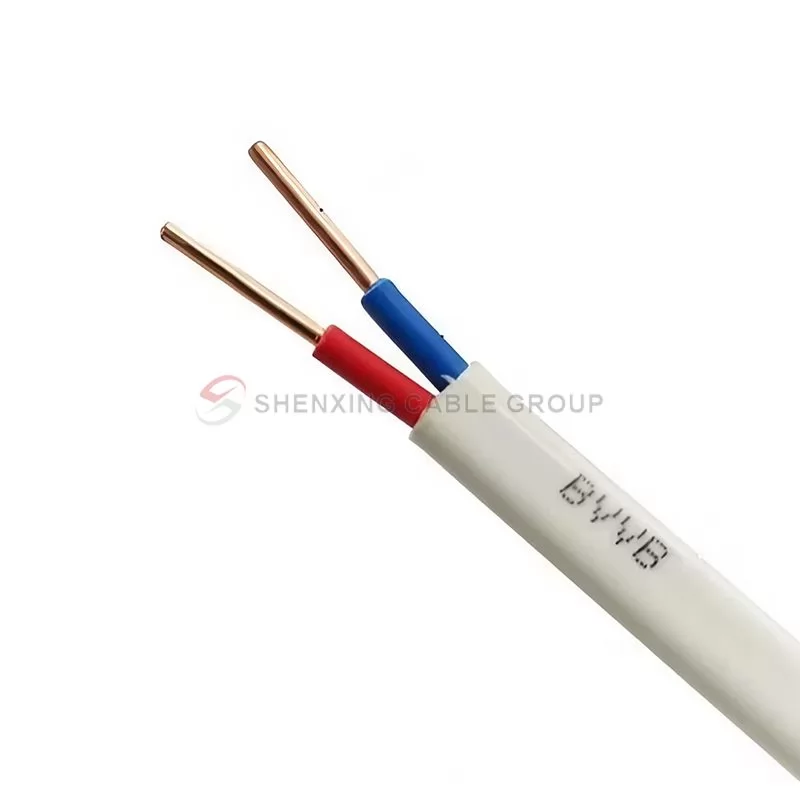
RVB-Copper Core Flat Sheathless Flexible Cable
Welcome to learn about Shenxing Cable Group's RVV/RVB cable (also known as flexible cable), which is a high-performance cable designed for a variety of low-voltage electrical applications. The cable consists of multiple copper conductors and a PVC outer sheath and is widely used in low-voltage electrical systems.
Read More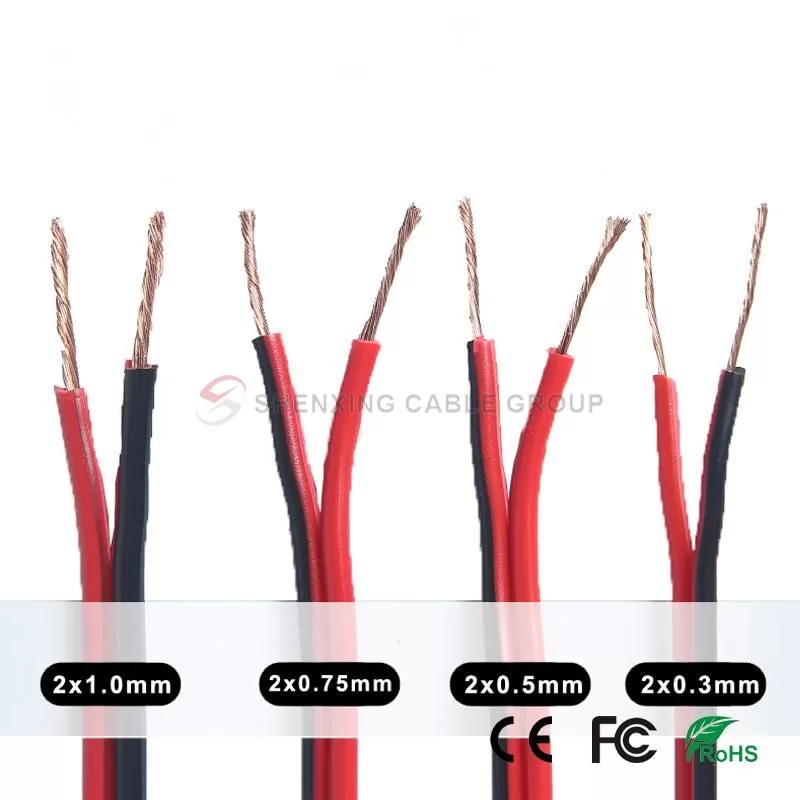
Copper Core PVC Insulated Connecting Soft Wire and Cable
Welcome to learn about RV cables from Shenxing Cable Group. This high-quality cable is designed for low-voltage electrical applications. By using high-quality materials and exquisite manufacturing technology, RV cables ensure that you enjoy reliable power supply and efficient power transmission in multiple fields, providing you with ideal solutions.
Read More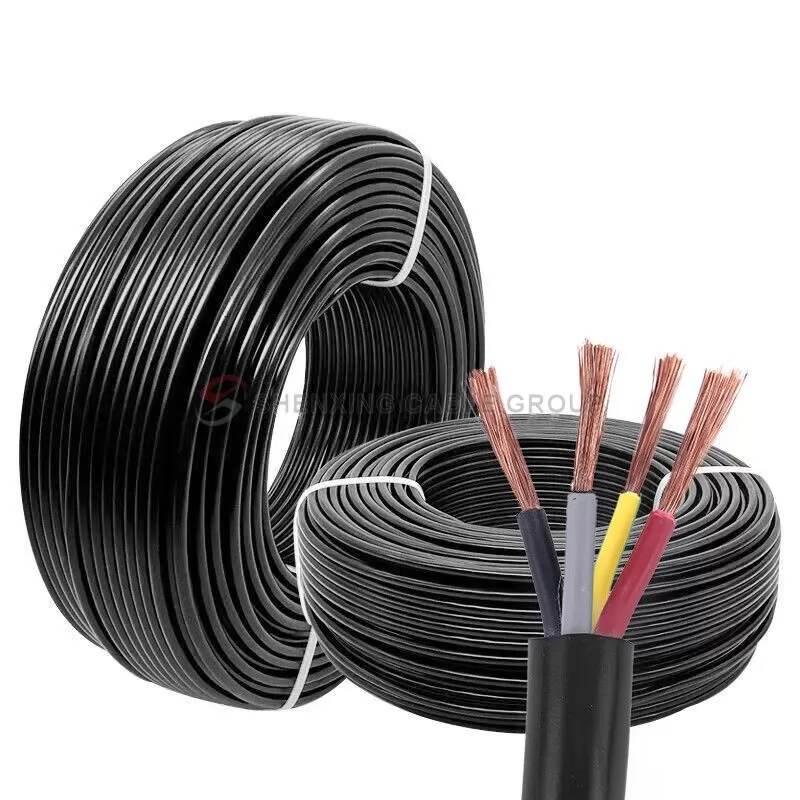
RVV cable is suitable for a variety of application scenarios, including home power wiring, industrial equipment connections, office electrical systems, etc. Whether it is used for power transmission, electrical equipment connection, or use in harsh environments, RVV cables can provide stable, efficient, and safe power support.
Read More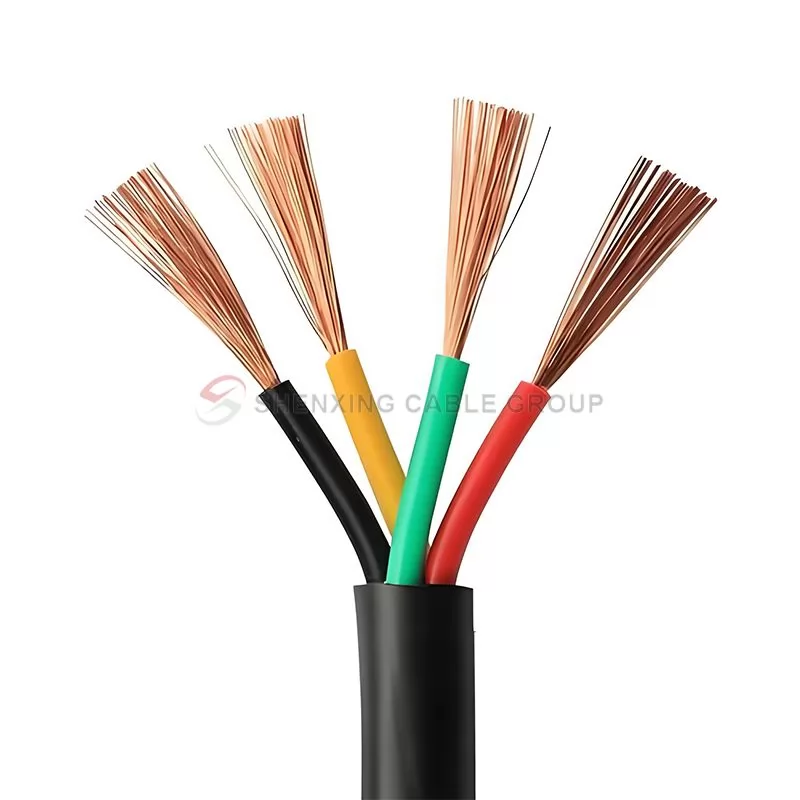
Copper Conductor, PVC Insulated and Sheathed, Steel-tape Armoured Control Cable
RVS twisted pair flexible cable provided by Shenxing Cable Group is a 300/500V voltage level cable consisting of two insulated conductors twisted around each other. We produce many types of twisted pair cables in strict accordance with the Chinese national standard GB/T 8734.3. RVS twisted pair shielded cable consists of two independent insulated copper conductors that are twisted around each other and arranged in parallel.
Read More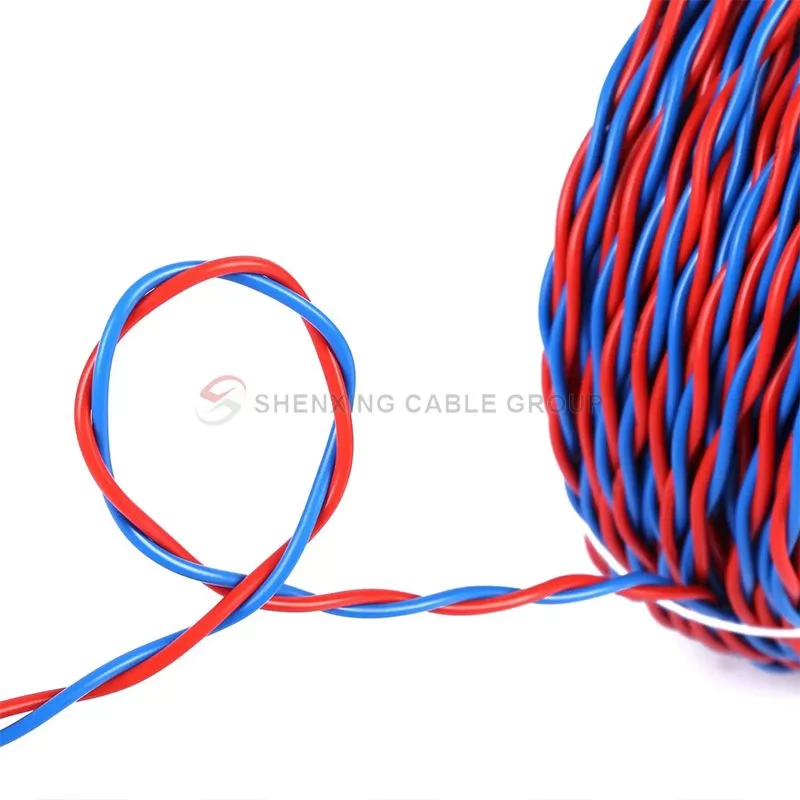
TÜV Solar PV Cable TÜV-H1Z2Z2-K
The SHENXING solar PV H1Z2Z2-K cable, which is TÜV certified according to EN 50618 and AENOR, is suitable for both fixed and mobile solar installations (solar farms, rooftop solar installations and floating plants). It is a highly flexible cable compatible with all major connectors and specially designed for the connection of photovoltaic panels. This versatile single-conductor cable is designed to meet the varying needs of the solar industry. Suitable for wet, damp and humid locations.
Read More
Shenxing Photovoltaic Cable PV1-F is a high-performance cable designed for solar photovoltaic systems. It has excellent high temperature resistance, extrusion resistance, environmental cracking resistance and other characteristics, ensuring the long-term stable operation of photovoltaic power generation systems. As a leading global photovoltaic cable manufacturer and supplier, Shenxing Cable is committed to providing high-quality cable solutions to meet the needs of various photovoltaic installa
Read More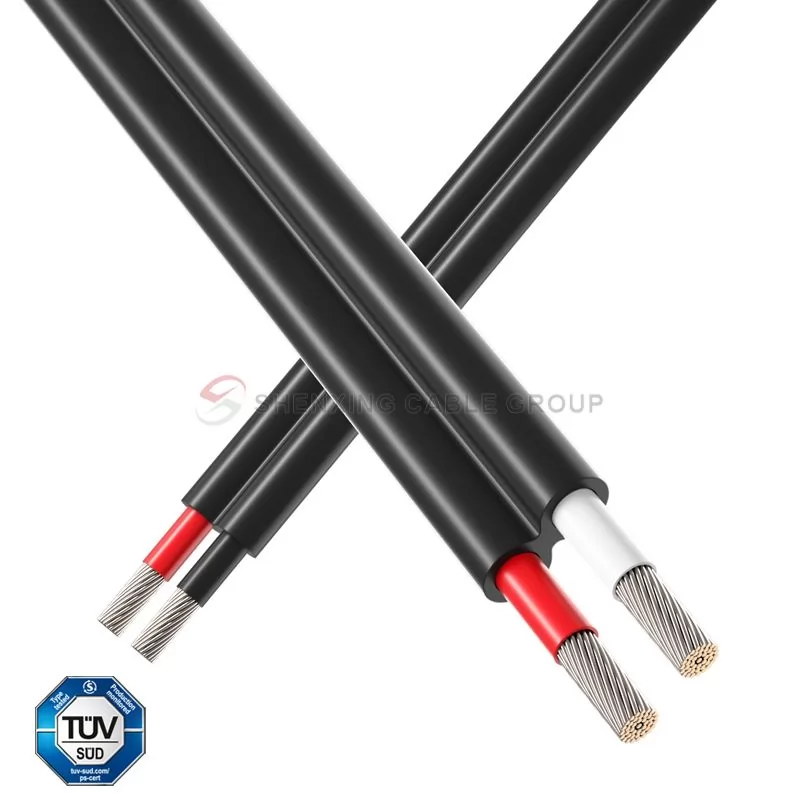
110kv Copper Core XLPE Insulated Corrugated Aluminum Sheathed Power Cable
YJLW high voltage cross-linked polyethylene cable is a high-quality cable product for high voltage power transmission. It adopts high-quality copper core, aluminum core and cross-linked polyethylene insulation materials to ensure the high efficiency and reliability of power transmission.
Read More